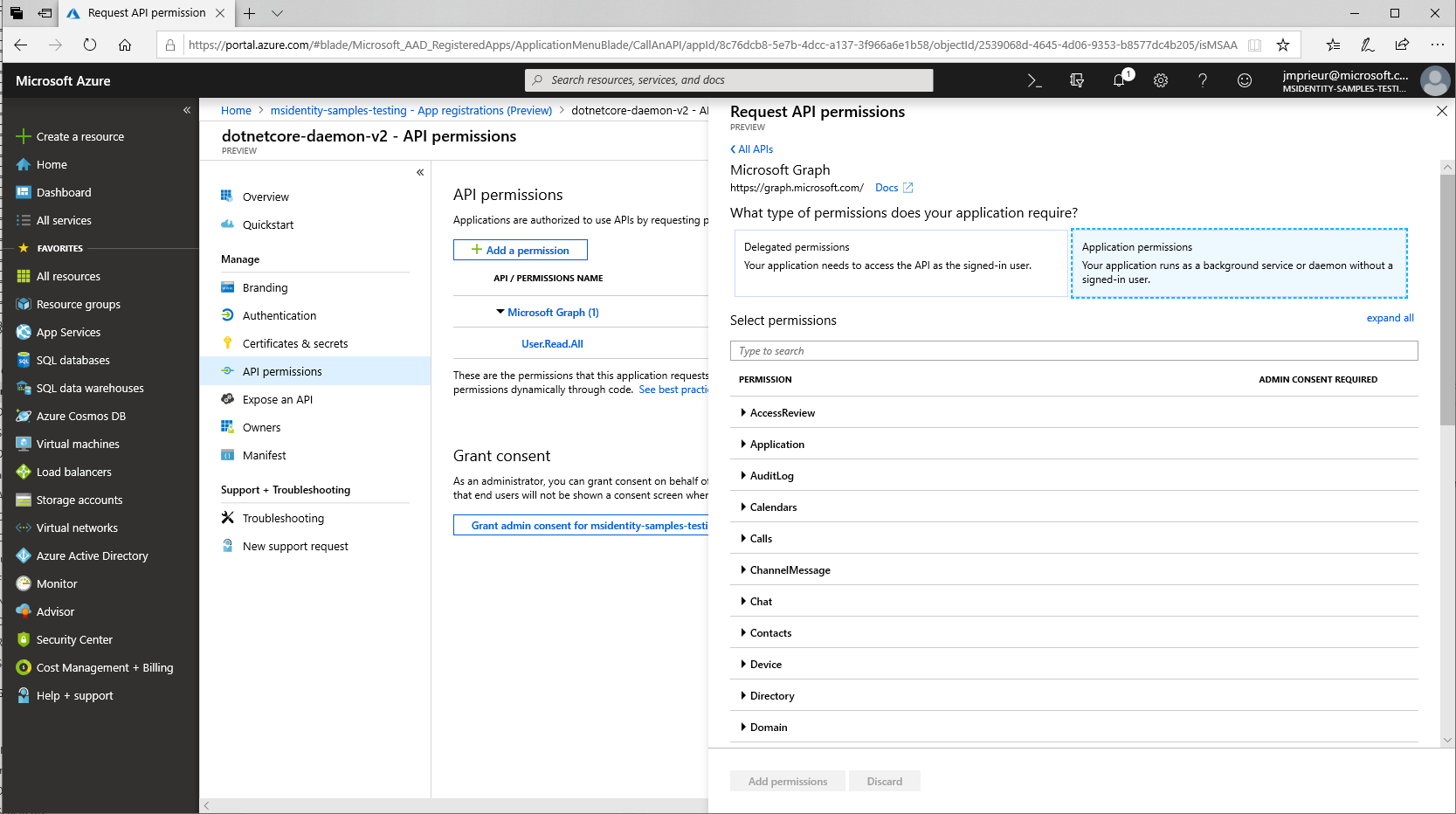Note
Access to this page requires authorization. You can try signing in or changing directories.
Access to this page requires authorization. You can try changing directories.
Applies to:  Workforce tenants
Workforce tenants  External tenants (learn more)
External tenants (learn more)
For a daemon application, here's what you need to know when you register the app.
Supported account types
When creating the application in your in Microsoft Entra tenant, choose one of the following options for your app registration:
- Accounts in this organizational directory only. This choice is the most common one because daemon applications are written by line-of-business (LOB) developers.
- Accounts in any organizational directory. You make this choice if you're an Independent Software Vendor (ISV) providing a utility tool to your customers. You need your customers' tenant admins to approve it.
Authentication - no reply URI needed
In the case where your confidential client application uses only the client credentials flow, the reply URI doesn't need to be registered. It's not needed for the application configuration or construction. The client credentials flow doesn't use it.
API permissions - app permissions and admin consent
A daemon application can request only application permissions to APIs (not delegated permissions). On the API permissions page for the application registration, after you select Add a permission and choose the API family, choose Application permissions, and then select your permissions.
The web API you're calling must define Application permissions (app roles), not delegated permissions. To learn how to expose such an API, see Protected web API: App registration - when your web API is called by a daemon app.
Daemon applications require the tenant admin to grant consent to the application calling the web API. Tenant admins provide consent on the API permission page by selecting Grant admin consent to our organization.
If you're new to identity and access management (IAM) with OAuth 2.0 and OpenID Connect, or even just new to IAM on the Microsoft identity platform, the following set of articles should be high on your reading list.
Although not required reading before completing your first quickstart or tutorial, they cover topics integral to the platform, and familiarity with them will help you on your path as you build more complex scenarios.
Authentication and authorization
Microsoft identity platform
Next steps
Move on to the next article in this scenario, App code configuration.
